Reflective account
My ideas to develop the work were around hiding and concealing words. This idea was inspired by a work of a local artist that I saw recently and I wanted my work to consider using erasure and layers in a personal way. I decided to write about things that concern me and sometimes cause anxiety – I will layer and erase them in this work. I decided to write a letter and then erase. As the making continued, I felt I was in a space where I could let go and trusted the making process. The outcome was fractured pieces of the words or letters. In the end, I think it is also a story about forgetting and moving on and revealing my personal way of making sense, to use the words of William Kentridge, ‘to make sense of the world’.
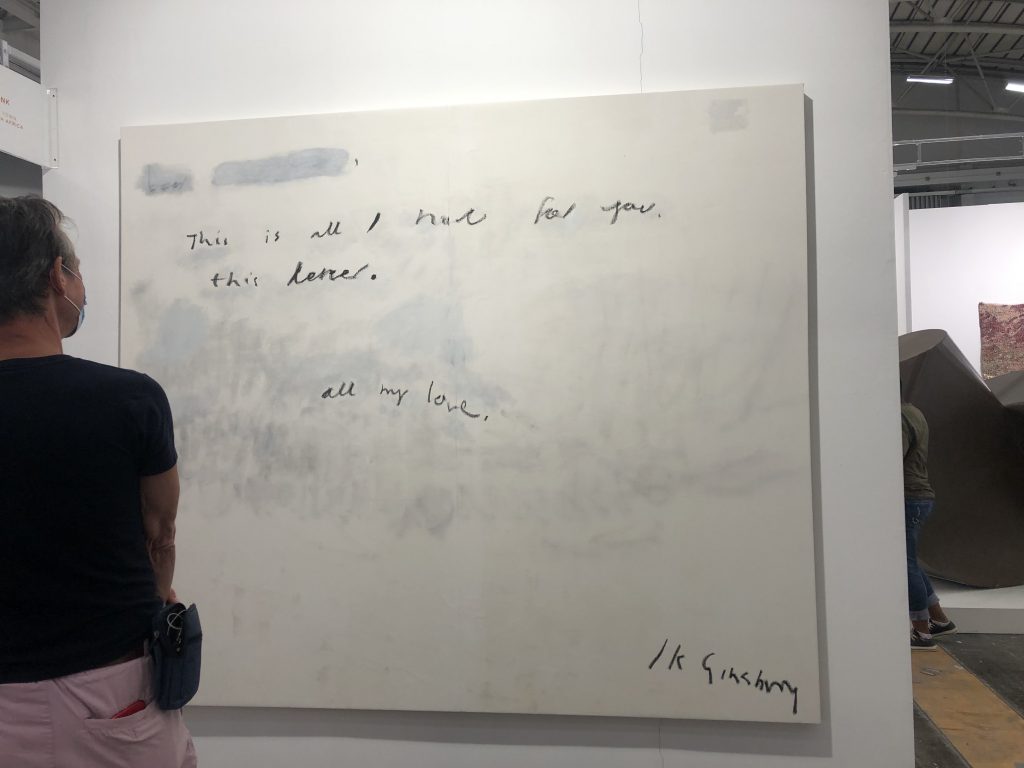
I was at an art fair in Cape Town and this work above, I really enjoyed, where the artist is making use of erasure and handwriting/scribbles. The artist is Jared Ginsburg, and I read that he prefers to work with oil paint, oil stick, graphite and mixed media on canvas
I would say that I decided on a system to find a relationship between my work, language, and the viewer. I wrote a very personal letter to my three sons, in my home language, Afrikaans. The letter is photographed below. Here the viewer will see that this is done in a way to conceal my letter – not meant to be read by the viewer. Just like with words, the artist can manipulate the material and subject. I do not think the viewers would make sense of the letter in the way I share it here. I thought about concealing/hiding words and contemplated the use of collage, cut-up, and erase. I will also test the material as I later in the making connected the letter onto a canvas paper with an acrylic medium.
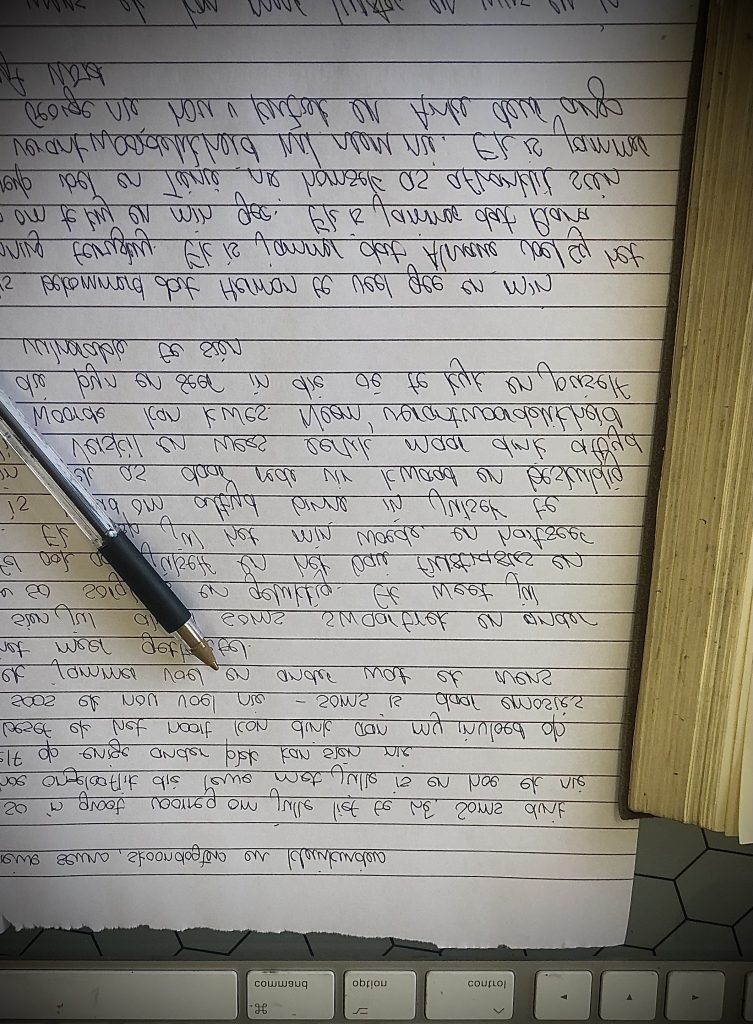
I then used layers on the letter and gave it titles as I changed the form. It was very personal and at the stage, where the letter is called a Love letter to my sons, I contemplated leaving the work, but I set out to consider how I could push the system I created: collage, scraping paint, new writing on top of.
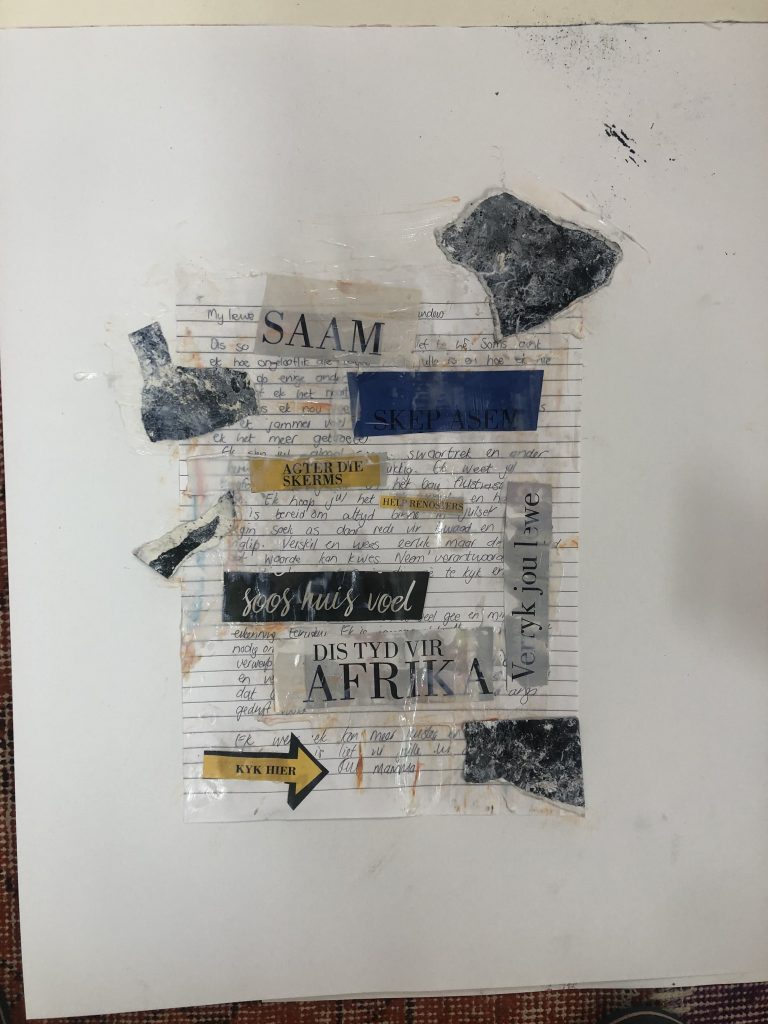
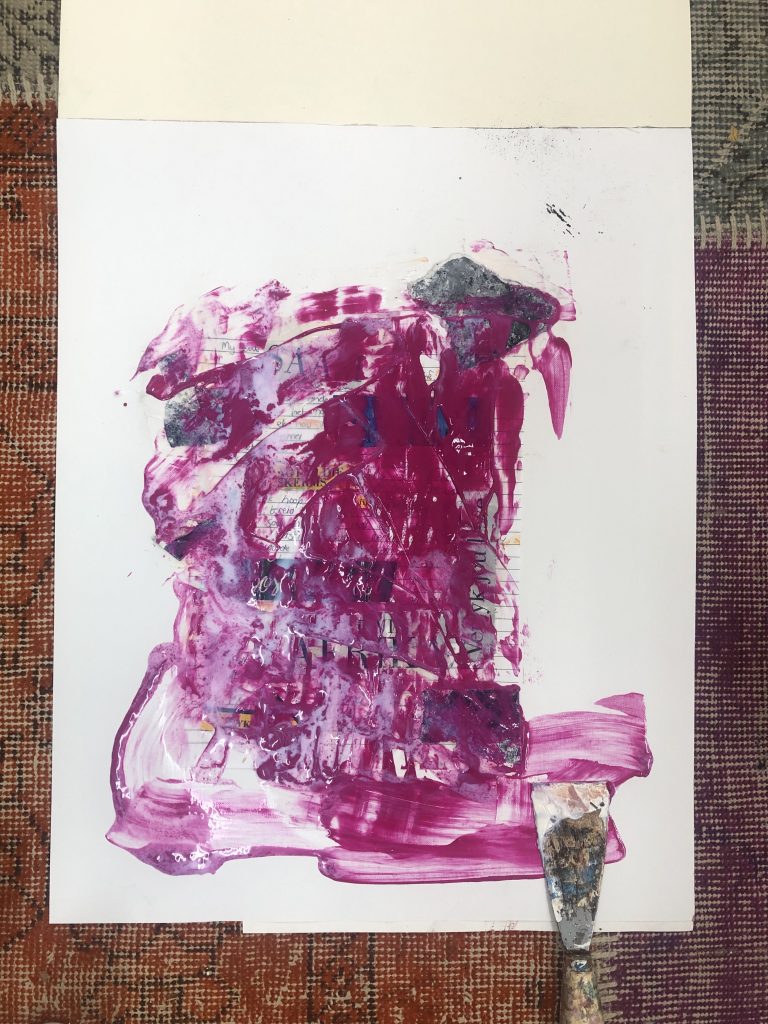
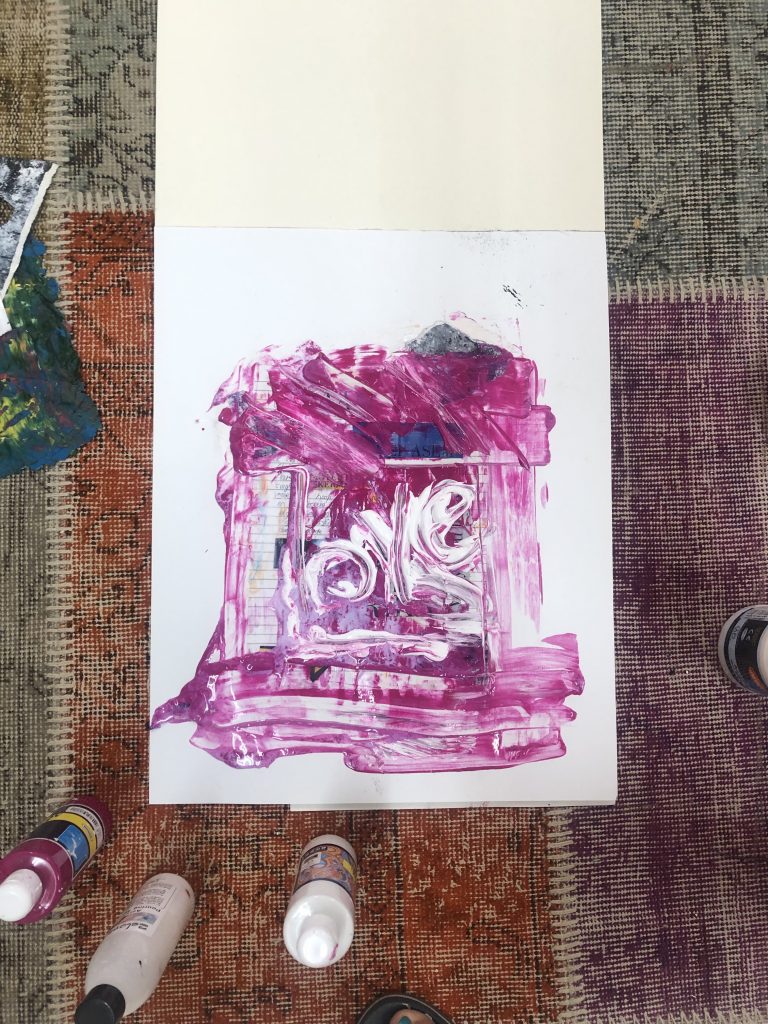
By now I knew the letter was not meant to be read by anyone. I had my experience (catharsis) with words and can now let go. I added more layers with oxides and later submerged the letter in water. How much could the material take? Would the words stay hidden?
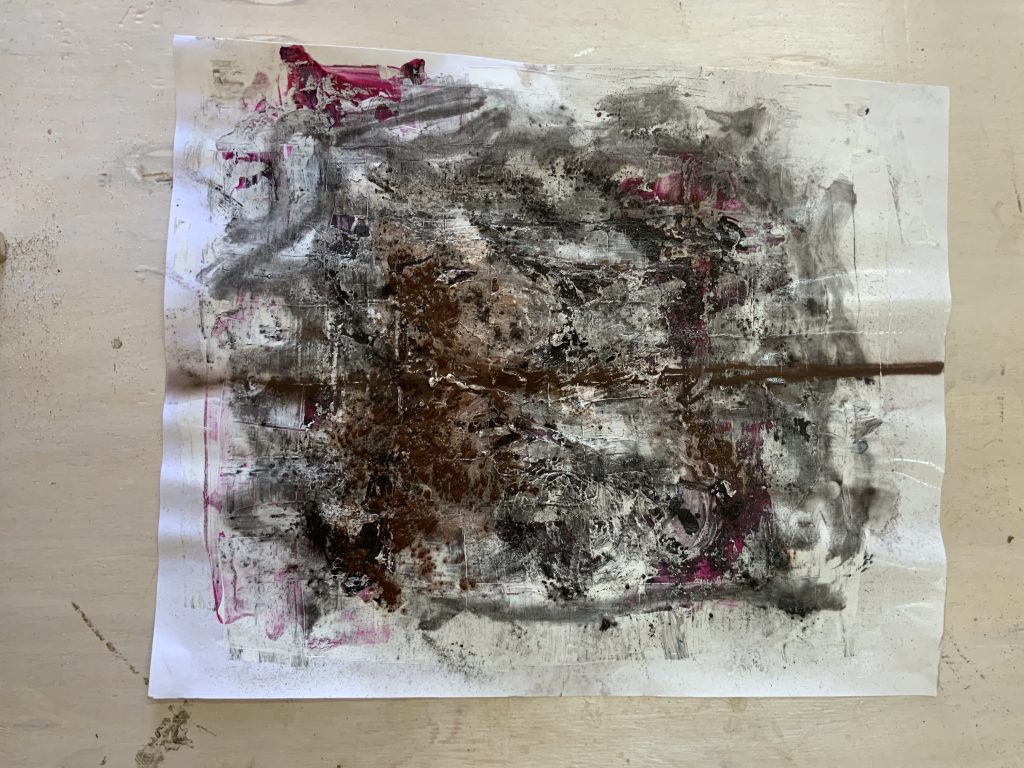
I continued to cover the letter after I glued it onto bigger support. By now the ongoing conflict in Ukraine had also influenced my thinking – what I really wanted to say is STOP. As I worked wet in wet I could write into the work.
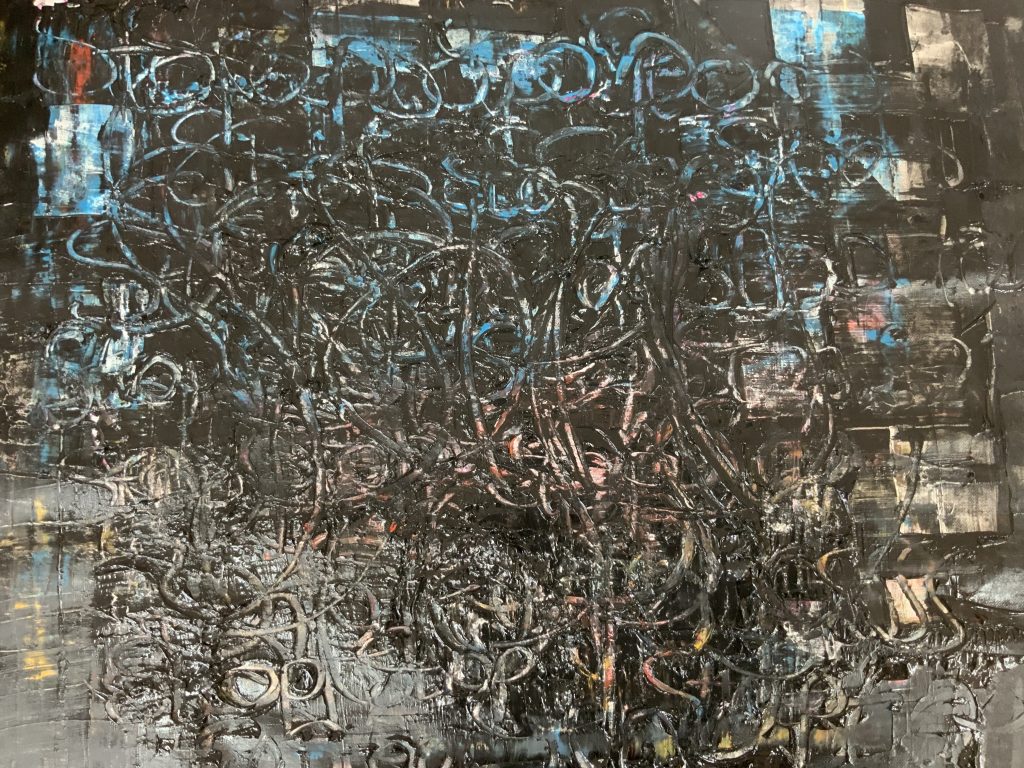
Writing became a performance against war and aggression, as well as my own concerns about hurt and anger that we carry as human beings, and how it influences relationships.
I looked at the work, now layered with materials and words, some seen and others concealed.
I continued with my last part of making, by fragmenting (deconstructing) the work. This felt like a sign of solidarity with many whose letters (may) never reach their sons/daughters/fathers/mothers. Words are powerful, but now I only have fragments of words and material left. I placed these around the edges and onto the canvas – it resembles islands, brokenness, fragments, a letter in my mind. I have the privilege to talk and share with my sons.
My experience with this work was very emotional and personal. I am not sure that the work is completed. In many ways, it left me with questions about the power of words said or written. I believe when we write we ‘think’ slower and consider words more appropriate. In a way, we edit and manipulate. I have also come to the conclusion that during this making I occupied two roles, one of the maker, but also one of the viewer – the making became a symbolic (emblematic?) way to look at how I think words is functioning or can function in my work, as well is in human life. In this way it indicated a type of separation from myself as I not only did the work because I had an assignment to make, it became a need to make and continue, almost not knowing what the outcome could be and have to be.
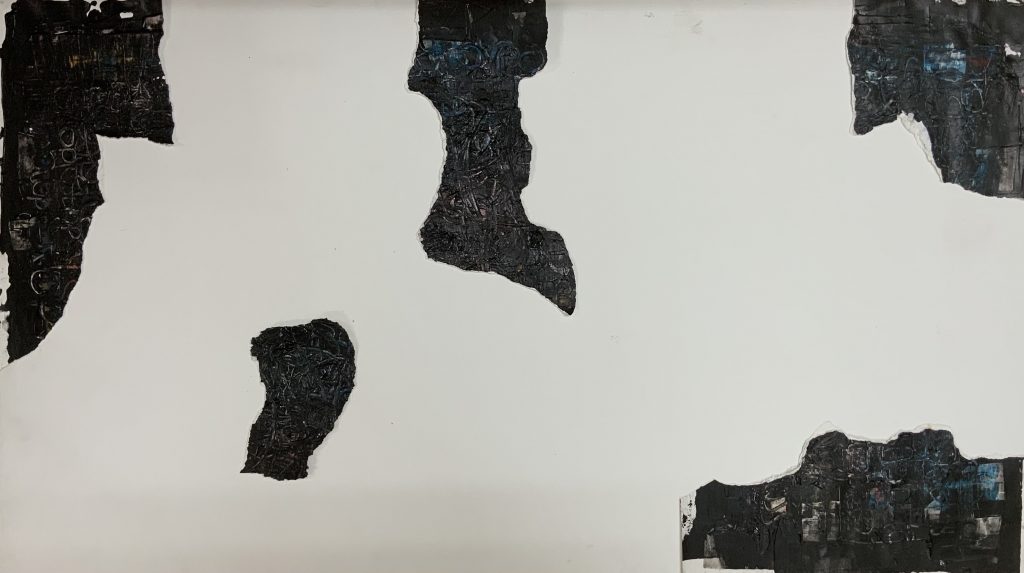
Conclusion
After making this work I went back to listen to a conversation with William Kentridge, How we make sense of the world. To my mind, Kentridge has a great understanding of
the process of thinking and has used techniques of cutting and tearing in his making. I was struck by his reference to using fragments as a way of understanding – we never can understand everything, and we will never know everything. In making this work I do believe there was a process of thinking through my body. It happened whilst doing work, the idea was embodied in the materials I explored and used, as well as the ideas that happened whilst making. I do think it started with a conscious idea, but as a process of making, a type of happening? I believe that my thinking was overtaken by the making and engagement with the materials.
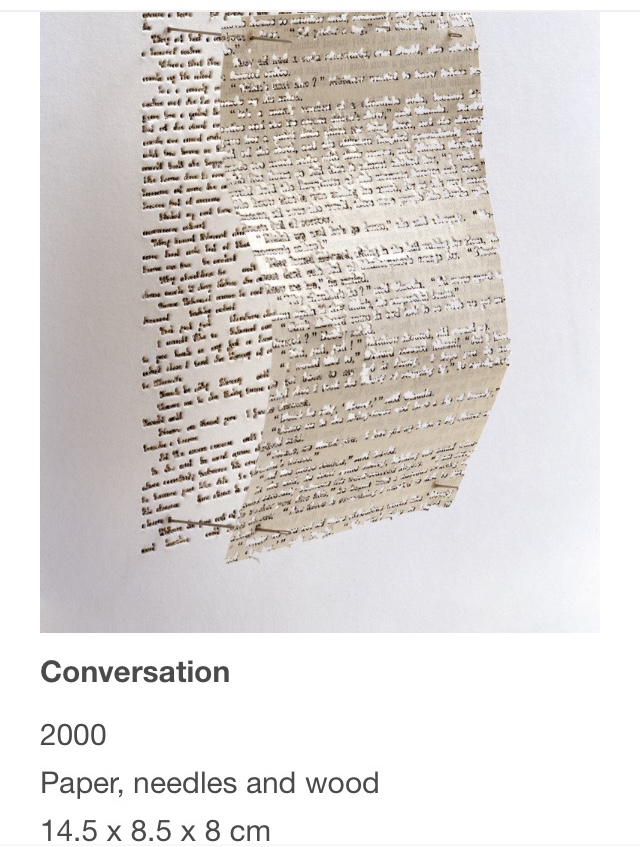
LIST OF ILLUSTRATIONS
Fig. 1. Ginsberg, J. (2021) Letter 4[photograph of work at Cape Town Art fair, 2022] In possession of: the author: Langvlei, Riebeeck West.
Fig. 2 Stander, K. (2022) Letter written to my three sons [original letter written in Biro pen] In possession of: the author: Langvlei, Riebeeck West.
Fig. 3 Stander, K. (2022) Work in progress [showing 3 phases of work in progress, using collage] In possession of: the author: Langvlei, Riebeeck West.
Fig. 4 Stander, K. (2022) Concealed letter in progress [letter concealed with medium and paint] In possession of: the author: Langvlei, Riebeeck West.
Fig. 5 Stander, K. (2022) Work in progress [letter concealed with words written into paint, wet-in-wet] In possession of: the author: Langvlei, Riebeeck West.
Fig. 6 Stander, K. (2022) Video [making of work with words] In possession of: the author: Langvlei, Riebeeck West.
Fig. 7 Stander, K (2022) Pieces: A letter to all sons/boys. March 2022 [Final work, collage of hidden words] In possession of: the author: Langvlei, Riebeeck West.
Fig. 8 Kentridge, William (2014) How we make sense of the world
Bibliography
Tate Shots,( 2018) William Kentridge, Art must defend the uncertain found online at: https://dezignark.com/blog/william-kentridge-art-must-defend-the-uncertain-tateshots/. (Accessed on 21 April 2022)